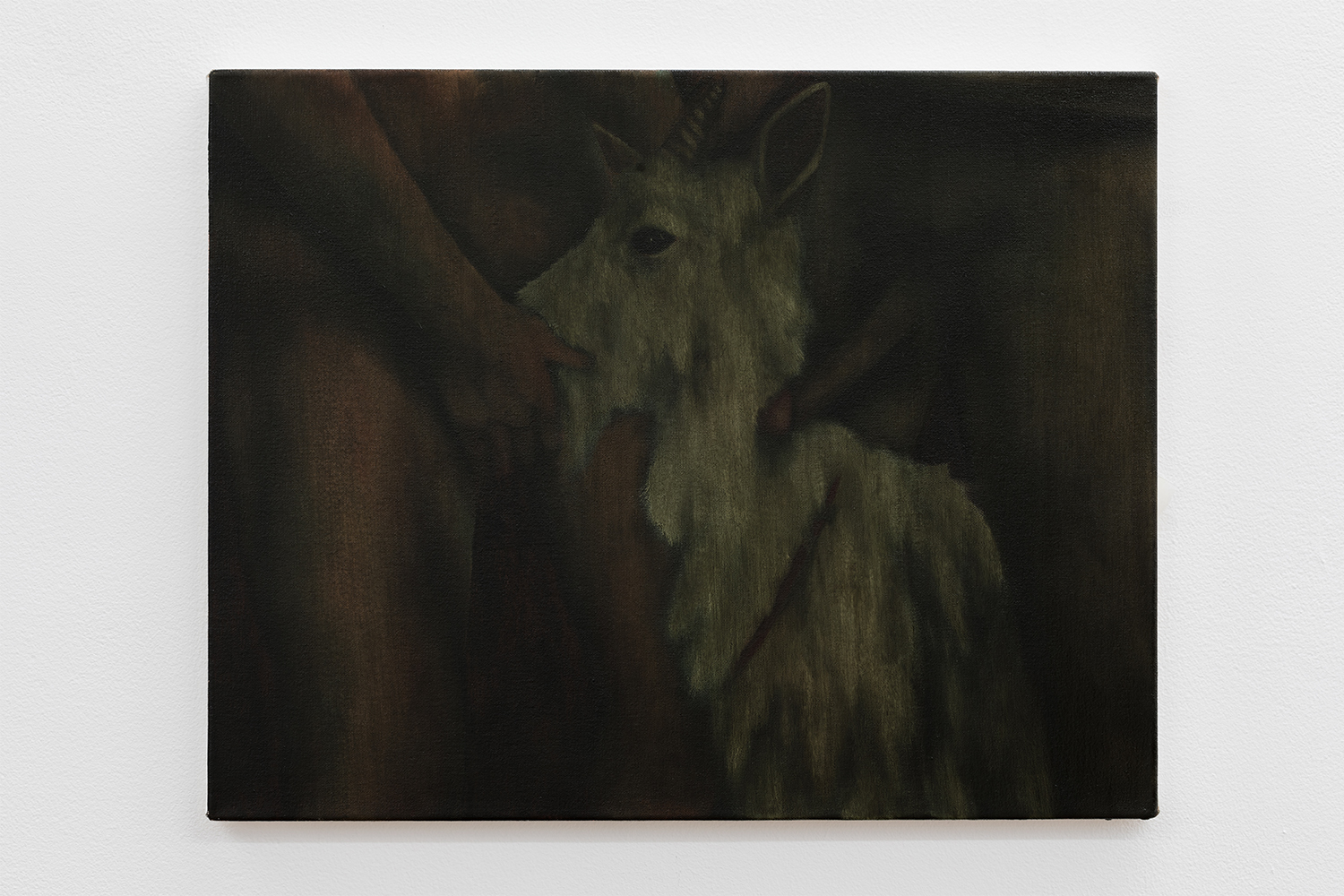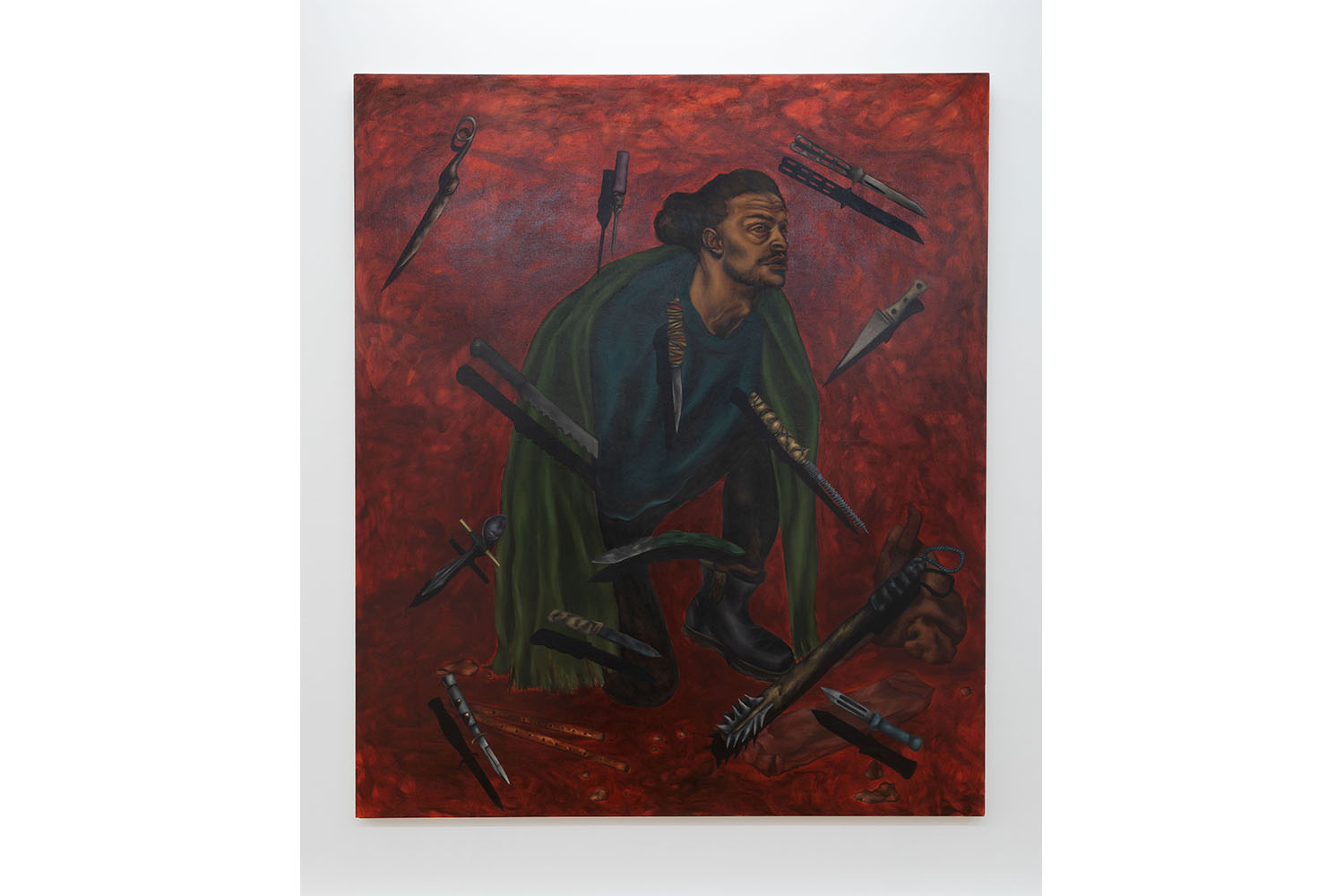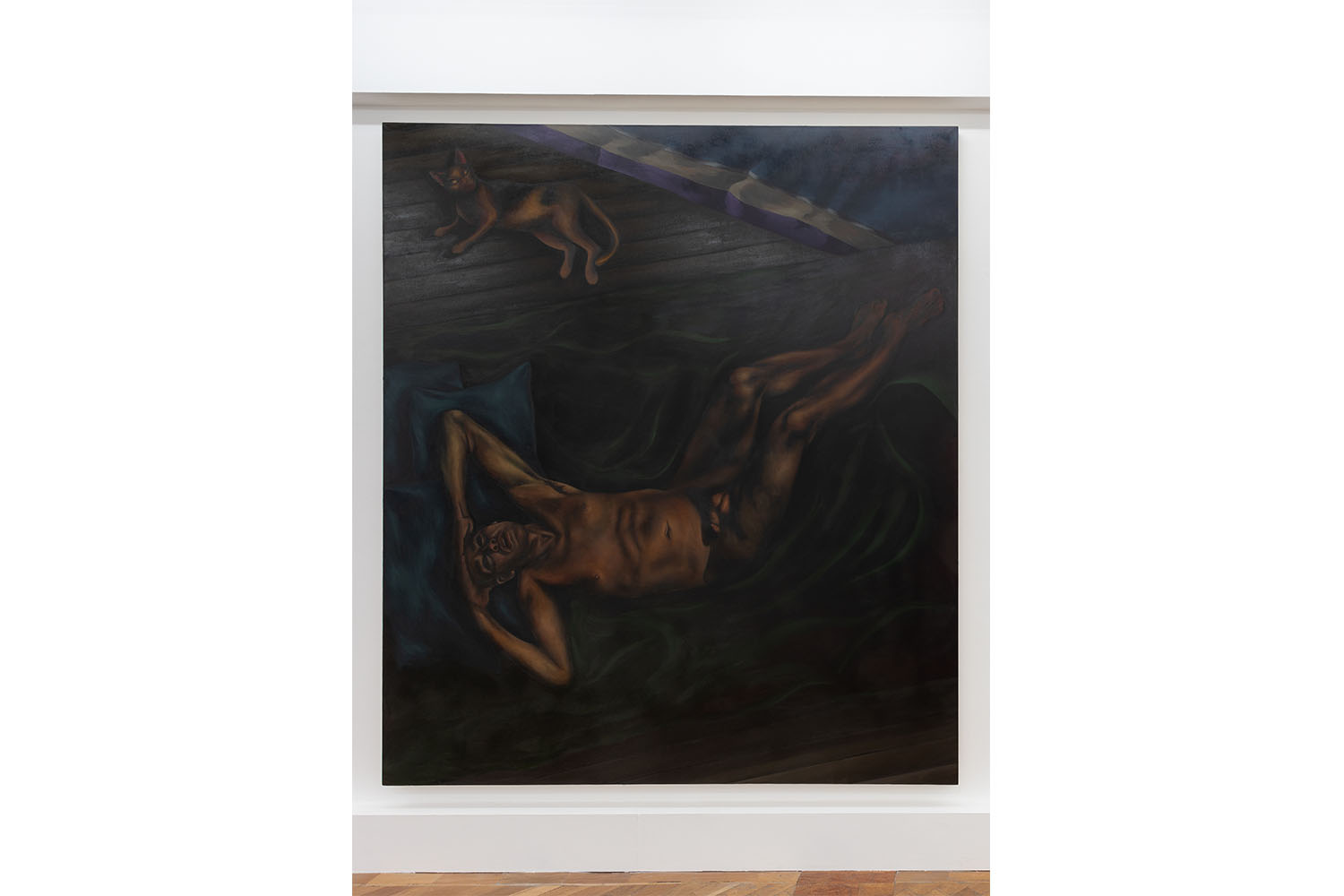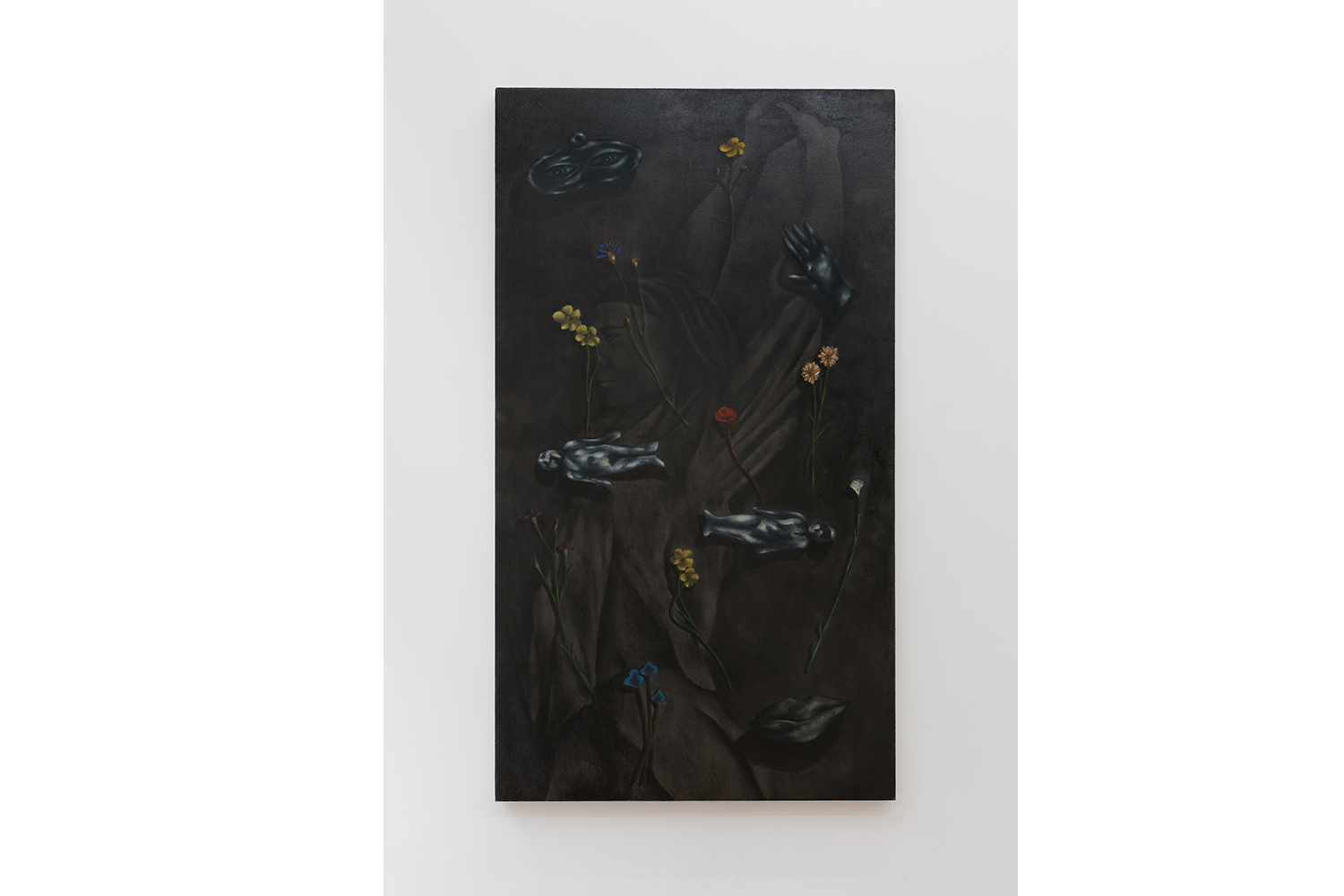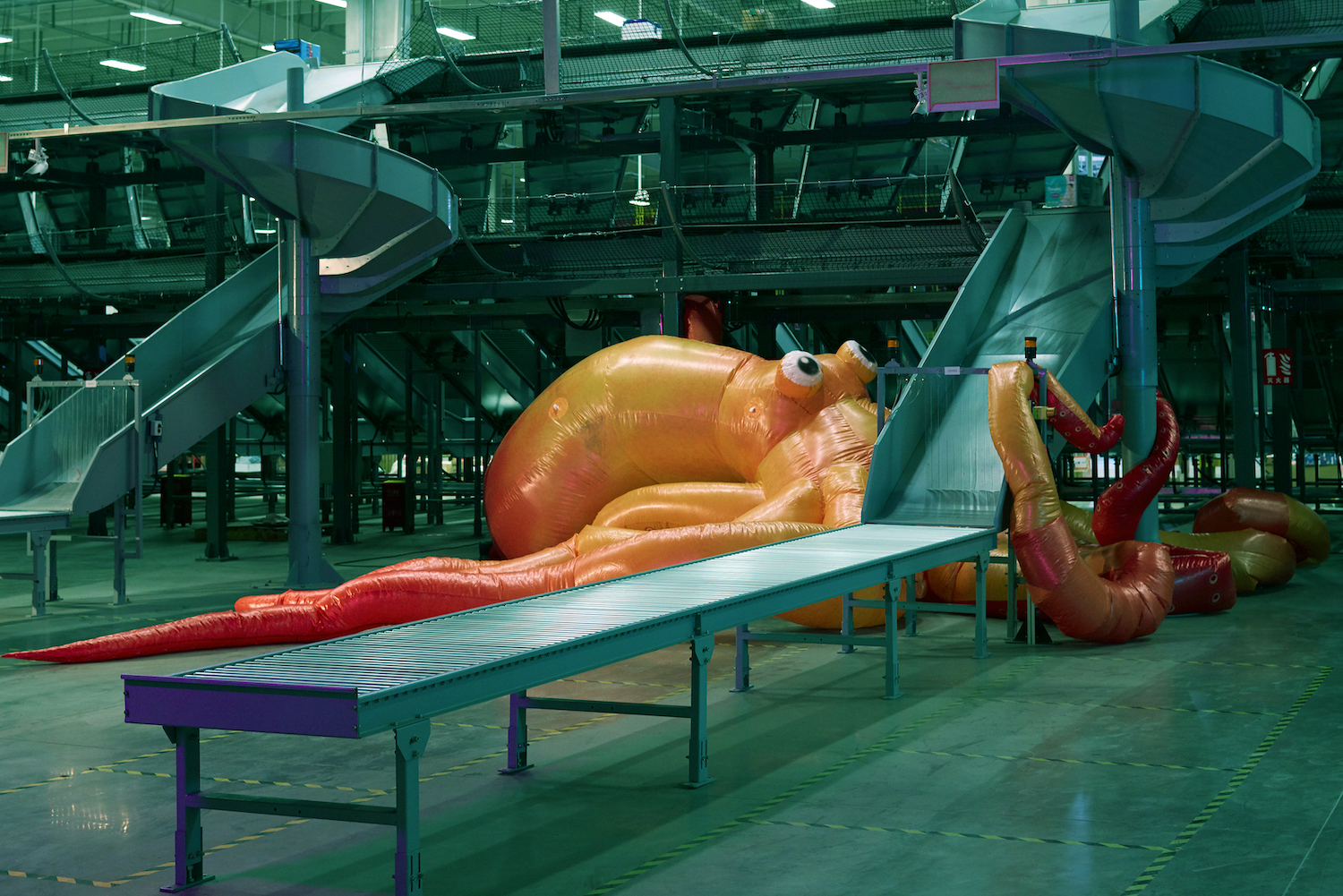The works in “Turbolent Drift” depict the act of witnessing, of enduring, of carrying a mark or trace, indelible physically and psychologically. From the figure of Arrotino, bound as perpetrator through his oppression—a non-consenting observer to both the action he is forced to perform and the systemic action of his own enslavement—to the non-human figures such as animals and totems, looking back onto the viewer, reminding us that our own act of witnessing can never be a neutral one.
That non-neutral experiencing of the world, particularly of recent years—lurching from one disaster to the next, with an increasingly amplified stream of information through which to consume each brutality and anxiety—continues to reinforce a collective state of being upon which Hammond gives compositional narrativization for. How can we make sense of our contemporary moment when our understanding is enveloped with emotion, agency is engulfed by circumstance, rendering states of both catatonia and stasis? To see what we feel proposes a means to process. Hammond parses visions of the contemporary through an amalgamation of myth, present-day image references and art historical influences. So that by plotting stories onto emotions, we may attempt to find renewed courses of action.

